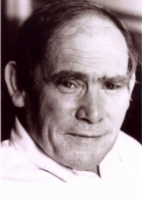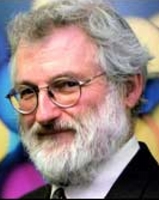2002 Nobel Prize awarded to Brenner, Horvitz & Sulston for Studies of the Genetic Regulation of C. elegans Development
 |
 |
 |
| Sydney Brenner |
Bob Horvitz |
John Sulston |
Sydney Brenner, also a co-discoverer of messenger RNA (with Jacob & Meselson, 1961), chose the tiny, transparent nematode worm Caenorhabditis elegans in about 1963 as a new model system in which to solve the problems of development and nervous system function while working at Cambridge University. [Notes and letters on the origins of the 'worm field'] Among his early co-workers, post-docs and students were H. Robert (Bob) Horvitz, John Sulston, Donna Alberston, Martin Chalfie, Robert (Bob) Herman, Jonathan Hodgkin, Don Riddle, Ellen Southgate, J. Nicoll Thomson, Sam Ward, Robert (Bob) Waterston, and John White. These scientists and others performed the detailed characterization of the biology, anatomy, genetics and development of C. elegans that laid the foundations (e.g., Brenner, 1974) for work that followed. Among these early achievements were the description of the complete embryonic and postembryonic cell lineages (patterns of cell divisions) (Sulston, 1976; Sulston & Horvitz, 1977; Sulston et al., 1980; Sulston et al., 1983) and a complete electron microscopic reconstruction of the anatomy and connectivity of the worm nervous system (Ward et al., 1975; White et al., 1976, White et al., 1986 ["The mind of a worm"]). Sulston and Alan Coulson (a co-inventor with Sanger of DNA sequencing) began physical mapping and cloning of the C. elegans genome (Coulson et al., 1986), which would set the stage for C. elegans to become the first multicellular organism to have its genome completely sequenced (C. elegans Sequencing Consortium, 1998 [Science cover]). Among many other achievements, Horvitz studied the genetic control of a universal developmental process known as 'programmed cell death' or apoptosis [one account of the importance of C. elegans in the study of cell death]. He and his co-workers discovered and characterized many worm cell death genes having counterparts in humans that function very similarly (e.g., Ellis & Horvitz, 1986; Yuan & Horvitz, 1990; Ellis et al., 1991; Hengartner et al., 1992; Yuan & Horvitz, 1992; Yuan et al., 1993; Hengartner & Horvitz, 1994; Xue & Horvitz, 1995; Xue et al., 1996; etc.)
References
For more information:
Brenner:
Sydney Brenner's Home Page at the Molecular Sciences Institute, Berkeley, CA.
Dr. Brenner is also a Distinguished Professor at the Salk Institute for Biological Studies
Horvitz:
Overview of Dr. Horvitz's research and the
Horvitz Lab Home Page at the Massachussets Institute of Technology
Sulston:
Sir John Sulston was until recently director of the Wellcome Trust Sanger Institute, one of the major genome research centers in the world. The Sanger Centre was one of the leading sequencers of the human and C. elegans genomes, and continues in the forefront of genomics. The Institute is named for Fred Sanger, who won Nobel Prizes in 1958 and 1980 for ground-breaking work in molecular biology. Sulston stepped down to return to continue work with C. elegans.
Yet more information about John Sulston





